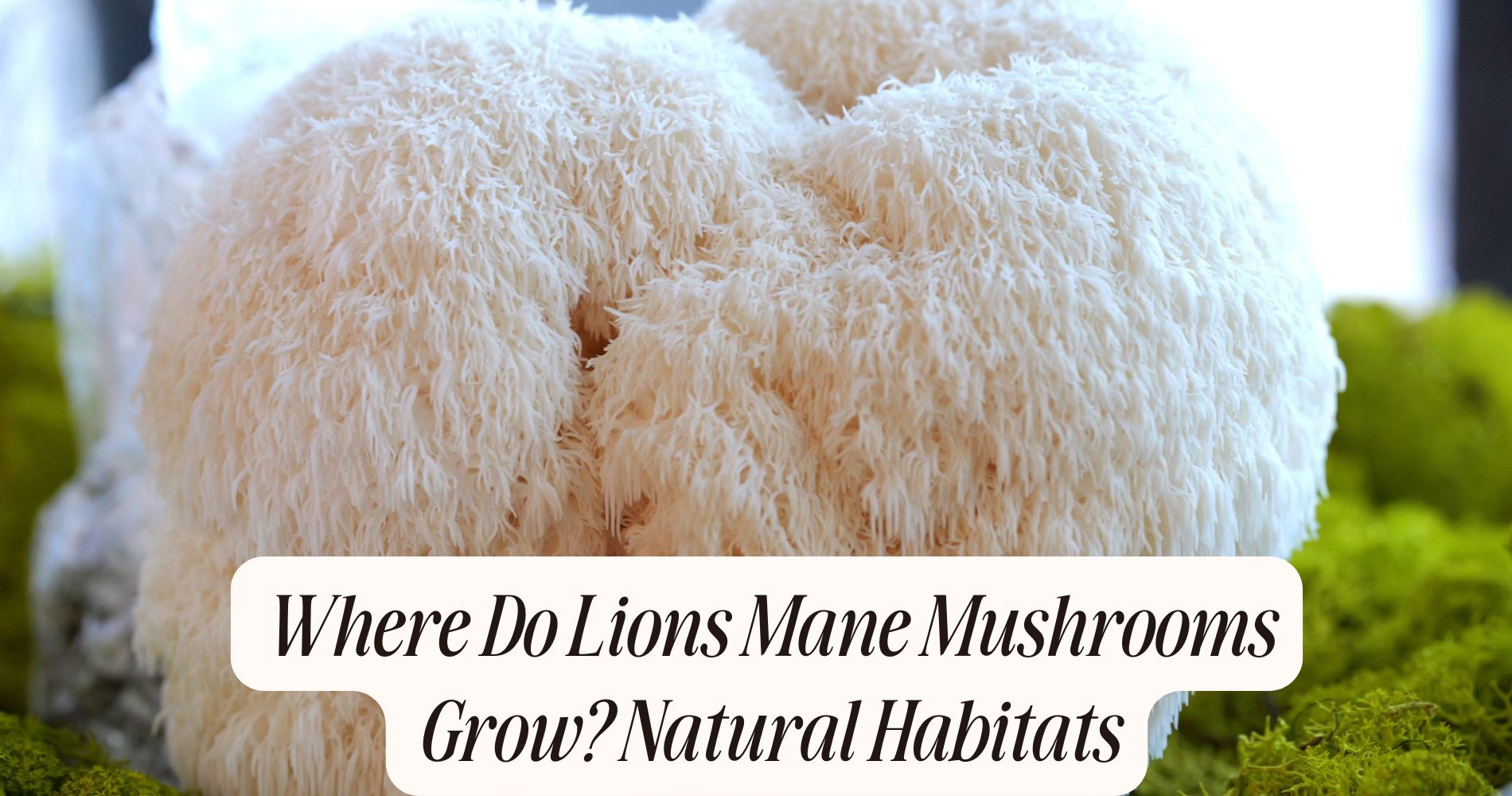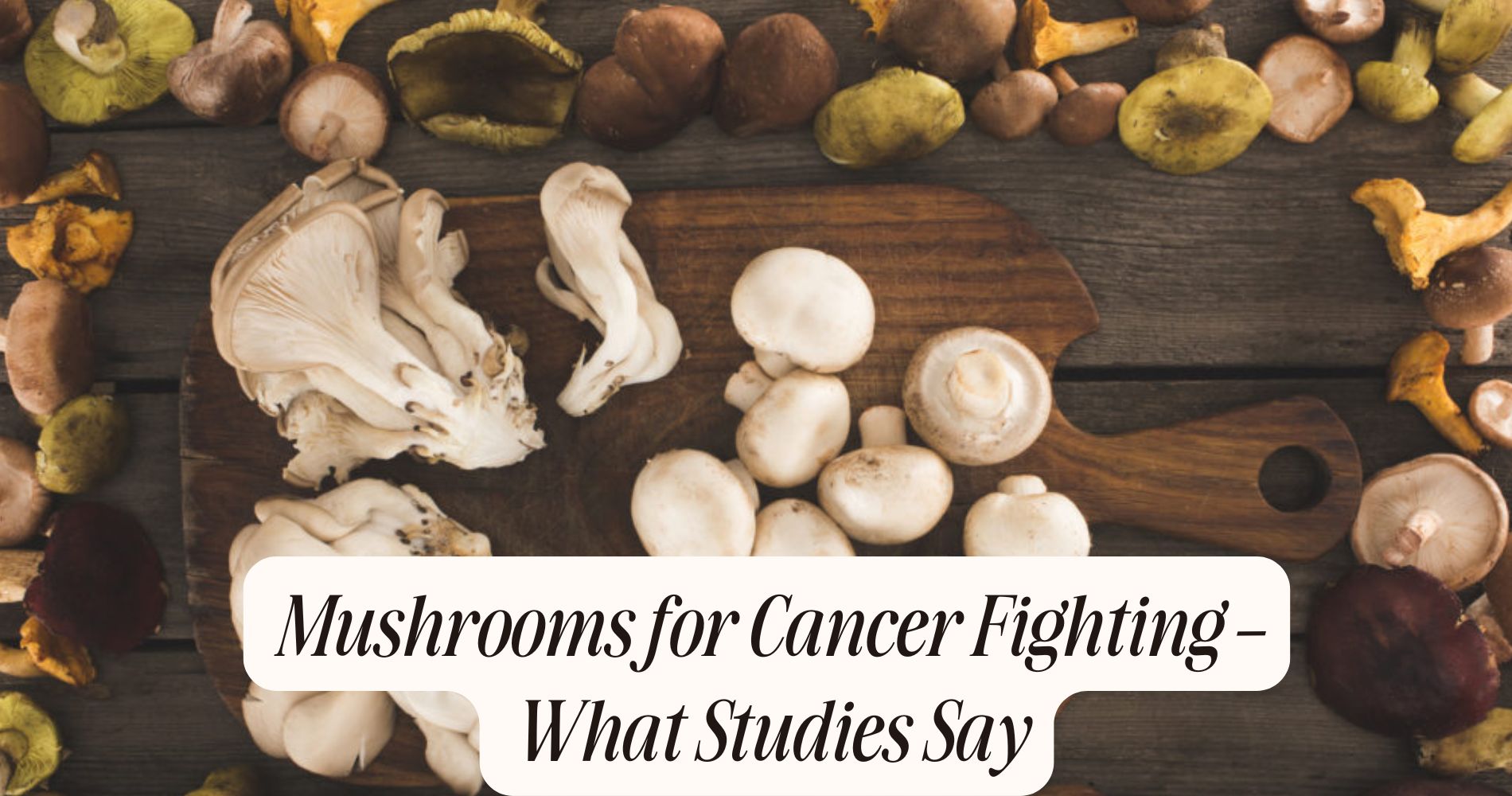
Where Do Lions Mane Mushrooms Grow? Natural Habitats
Where do lions mane mushrooms grow? You'll spot Lion's Mane mushrooms (Hericium erinaceus) on decaying hardwoods such as beech, oak, or maple in cool, humid temperate forests across North America, Europe, and East Asia. They flourish in undisturbed deciduous woodlands, acting as saprotrophs by decomposing lignin-rich substrates. Appearing from late summer to autumn, their unique spines signal their presence on dead or dying trunks. Changes in forest health or moisture can limit their growth. Discovering where they thrive provides deeper ecological context.
Geographic Distribution Around the World
Although Hericium erinaceus, commonly known as lion’s mane mushroom, occupies a broad ecological niche, its natural distribution primarily spans the temperate forests of the Northern Hemisphere. You’ll typically encounter this species across deciduous woodlands in North America, Europe, and East Asia, where it colonizes dying hardwoods, especially beech and oak.

Taxonomically classified within the Hericiaceae family, lion’s mane thrives as a saprotrophic or weakly parasitic organism, decomposing lignin-rich substrates.
Its presence in ancient forests has inspired mythical habitats in folklore, especially in East Asian traditions, where the mushroom’s unique form and scarcity imbue it with cultural significance.
Preferred Climate and Weather Conditions
When you examine the environmental parameters favoring Hericium erinaceus, you'll find that this species exhibits a distinct affinity for cool, humid climates typical of temperate deciduous forests.
You’ll notice its fruiting bodies thrive in regions where annual precipitation is moderate to high and relative humidity remains consistently elevated.
Ideal temperature ranges span from 10°C to 24°C, supporting the mycelial network’s metabolic processes and enzymatic activity.
Climate adaptation is evident in the fungus’s ability to synchronize fruiting with seasonal weather variability, often responding to fluctuations in moisture and temperature.
You’ll observe that prolonged drought or excessive heat can inhibit development, while stable moisture regimes foster robust colonization.
This ecological sensitivity ensures Hericium erinaceus prospers in microhabitats where mesic conditions offset transient climatic extremes.
Common Tree Hosts for Lion’s Mane
While Hericium erinaceus demonstrates substrate versatility, it exhibits a marked preference for colonizing hardwood species, particularly those within the genera Quercus (oak), Fagus (beech), and Acer (maple).
You'll often encounter Lion's Mane on senescent or decaying trunks and branches, as it acts as a saprotroph or weak parasite, decomposing lignin and cellulose within these hosts.
This taxonomic affinity informs both wild foraging and controlled cultivation methods—growers replicate these substrates using sterilized hardwood logs or sawdust to optimize yield and bioactive compound production.

The biochemical interactions between Lion’s Mane and these hardwood hosts contribute to the fruiting body’s density of hericenones and erinacines, compounds linked to its renowned medicinal properties.
Understanding these host relationships enhances sustainable harvesting and cultivation strategies.
Forest Types Where They Thrive
Recognizing Lion’s Mane’s preference for hardwood hosts like oak, beech, and maple, you’ll find this fungus most frequently in temperate deciduous forests where such trees dominate the canopy. These forests create an ideal microclimate—moderate humidity, filtered sunlight, and consistent organic matter decomposition—which supports Hericium erinaceus colonization.
You’ll rarely encounter Lion’s Mane in coniferous or boreal forests, as the acidic substrate and resinous wood don’t favor its enzymatic lignin breakdown.
Foraging tips: Target mature, undisturbed stands with abundant dead or dying hardwoods, especially fallen logs and large snags. Avoid young secondary growth or monoculture plantations, as these lack suitable substrates.
Cultivation methods often mimic this ecological context, using sterilized hardwood logs or sawdust to replicate the natural substrate composition and moisture dynamics found in these forest types.
Seasonal Patterns of Growth
Although Hericium erinaceus demonstrates perennial mycelial persistence within host substrates, its fruiting bodies typically emerge during late summer through autumn, coinciding with periods of elevated humidity and moderate temperatures.
You’ll notice that this fruiting timing aligns with seasonal variations in temperate deciduous forests, where host trees like Fagus, Quercus, and Acer exhibit increased moisture content.

Environmental cues such as diurnal temperature shifts and sustained precipitation facilitate the progression from vegetative mycelium to reproductive sporophores.
These factors guarantee that Hericium erinaceus maximizes spore dispersal and resource acquisition during favorable ecological windows.
In regions with mild winters, you might observe rare off-season fruiting, but such instances remain exceptions, dictated by microclimatic anomalies.
Understanding these phenological patterns helps you anticipate optimal periods for observation and study of this taxon.
Signs of Lion’s Mane in the Wild
With an understanding of Hericium erinaceus’s fruiting season, you can focus on identifying its distinctive presence within native habitats. Look for its cascading, icicle-like spines—ranging from 1–5 cm—emerging from dead or dying hardwoods, primarily Fagus (beech) and Quercus (oak) species. These structures create the mythical appearances that give Lion’s Mane its name, often resembling a white pom-pom or a spectral beard.
In the wild, you'll notice clusters forming on elevated wounds or decaying trunks, indicating maximum moisture and substrate conditions. Unlike cultivated specimens, wild Lion’s Mane typically exhibits less uniformity due to variable environmental factors.
Impact of Environmental Changes on Growth
As climate variability intensifies and forest composition shifts, Hericium erinaceus faces altered patterns of substrate availability and microclimatic conditions critical for its development. You’ll notice that increased temperatures and irregular precipitation disrupt the moisture regimes of decaying hardwoods—prime substrates for this saprotrophic fungus.

In urban environments, fragmentation of woodlands and reduction of mature host trees, particularly Quercus and Fagus species, limit colonization opportunities. Additionally, soil contamination from industrial runoff and heavy metals can impair mycelial health, diminishing sporocarp formation.
You must consider that anthropogenic disturbances, such as habitat fragmentation and introduced pathogens, further destabilize the ecological niche of H. erinaceus. These factors collectively constrain population viability, alter fruiting phenology, and may shift the biogeographical distribution of lion’s mane mushrooms over time.
Conservation and Sustainable Foraging Practices
Given the ecological specificity of Hericium erinaceus to mature hardwood forests—particularly those dominated by Quercus, Fagus, and occasionally Acer species—effective conservation strategies must prioritize the preservation of old-growth substrates and the maintenance of undisturbed microhabitats.
You should recognize that sustainable harvesting depends on identifying fruiting bodies without causing damage to the mycelial network embedded within decomposing logs. By leaving a portion of the basidiocarps intact, you’ll help facilitate continued spore dispersal and population regeneration.
Prioritize habitat preservation by avoiding the removal of entire logs or excessive disturbance of forest floor detritus, as these actions disrupt the fungal life cycle.
Engage with local guidelines and ethical foraging protocols to ensure that Hericium erinaceus populations remain viable, supporting broader forest ecosystem integrity.
Enjoy Lion's Mane Benefits the Easy Way: SUPER MUSHROOM GUMMIES
Curious about where do lions mane mushrooms grow but don’t have time to forage? Try Well Gummies' SUPER MUSHROOM GUMMIES! These convenient, chewable gummies combine the power of Lion's Mane and nine other functional mushrooms into one delicious wild berry-flavored treat. Fuel your brain, boost your energy, and support your immune system naturally—all without the hassle of finding and preparing wild mushrooms. No jitters, no crash—just balanced energy and mental clarity to keep you shining all day. Discover the power of mushrooms the easy way with Well Gummies!
Frequently Asked Questions
Are Lion’S Mane Mushrooms Safe to Eat Raw?
You can eat Hericium erinaceus (lion’s mane mushroom) raw, but you’ll maximize nutritional benefits and unseal key culinary uses by cooking it. Cooking improves digestibility and bioavailability of polysaccharides, while enhancing this Basidiomycota fungus’s unique flavor profile.
Can Lion’S Mane Mushrooms Be Grown Indoors?
You can pursue indoor cultivation of Hericium erinaceus by replicating environmental controls—humidity, temperature, and substrate—mimicking its ecological niche. This Basidiomycete thrives when you maintain precise parameters, enabling fruiting body development independent of natural habitats.
What Are the Main Lookalikes of Lion’S Mane Mushrooms?
When you practice wild mushroom identification, you’ll encounter lion’s mane lookalikes like Hericium coralloides and Hericium americanum. However, toxic lookalikes such as certain toothed fungi in the genus Mycotis require careful ecological and morphological analysis for accurate differentiation.
Are Lion’S Mane Mushrooms Used for Medicinal Purposes?
You'll find that Hericium erinaceus, or lion's mane mushroom, is renowned for medicinal benefits. Researchers examine its bioactive compounds for neuroprotective, immunomodulatory, and antioxidant health applications within clinical mycology, highlighting its significance in contemporary functional food taxonomy.
How Do You Store Harvested Lion’S Mane Mushrooms?
After harvesting techniques for Hericium erinaceus, you’ll want to use breathable storage containers, like paper bags, to prevent moisture buildup. Store them in refrigeration at 1–4°C, as this maintains cellular integrity and prolongs post-harvest freshness.
Conclusion
As you explore temperate hardwood forests, you'll notice Hericium erinaceus prefers decaying Fagaceae and Betulaceae hosts in moist, shaded environments. Its sporocarp emergence aligns with late summer and autumn phenology, thriving where microclimate stability persists. Recognize its distinctive icicle-like spines and prioritize ethical foraging to support population viability. By understanding its ecological niche and the impacts of habitat disturbance, you contribute to the conservation and resilience of this remarkable saprotrophic-fungus within its native ecosystems.




